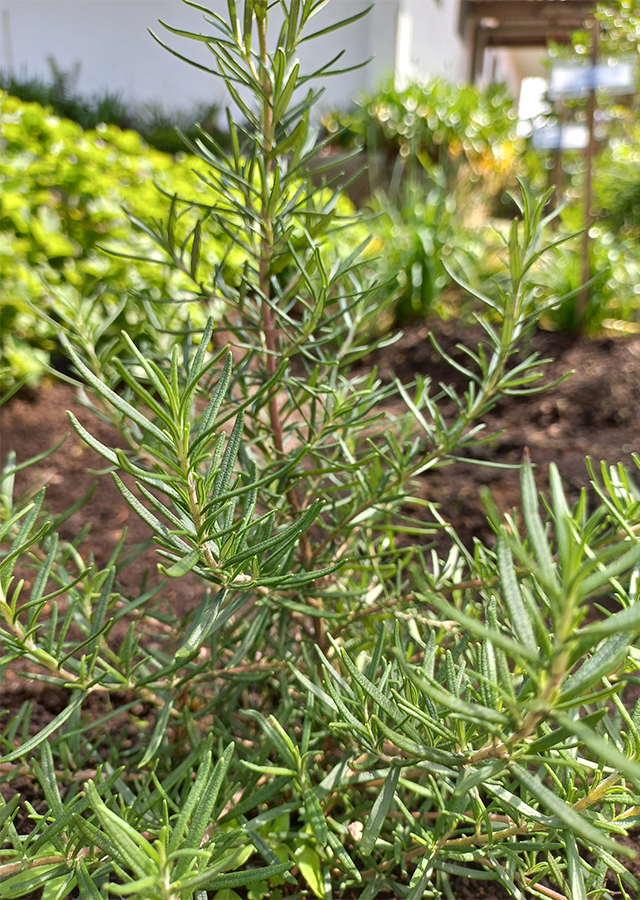Traditional Herbs from Salvia rosmarinus
bad_mouth
- Prepare rosemary leaves and wash them until clean.
- Boil the leaves until boiling.
- Strain the boiled product then gargle to reduce bad breath.
clean_eyes
- Prepare fresh rosemary leaves, wash until clean.
- Soak the leaves in water, wait for about a few hours.
- Use the water from the soak as an eyewash.
- Use\u00a04-5 times a day.
What is Salvia rosmarinus Looks like??



Parts of Salvia rosmarinus that could be used
- Leaves
- Twigs
Salvia rosmarinus Distribution
Rosemary comes from Albania, Algeria, Baleares, Corse, Cyprus, East Aegean Islands, Egypt, France, Greece, Italy, Libya, Morocco, Portugal, Sardegna, Sicily, Spain, Tunisia, Turkey, Yugoslavia. Rosmery is usually used as an ornamental plant in gardens. The leaves are used to flavor various foods, such as stuffing and grilled meat. Rosemary oil is used for body fragrance or to scent a room. Rosemary is also burned as incense, and used in shampoo and cleaning products. Folklore and customs of the plant or its oil have been used in traditional medicine in the belief that it may have medicinal effects. Rosemary was also considered sacred to the ancient Egyptians, Romans, and Greeks.Agroecology of Salvia rosmarinus
Rosemary is a plant that is considered easy to grow and pest resistant. Rosemary can grow quite large and maintain its appeal for years, can be pruned into formal shapes and low hedges, and has been used for topiary. This plant is easy to grow in a pot. Ground cover cultivars are widespread, with a dense, long-lasting texture. Rosemary grows in well-draining, loamy soil in open, sunny locations. It will not tolerate standing water and some varieties are susceptible to frost. Grows best in neutral to alkaline conditions (pH 7–7.8) with average fertility.
Morphology of Salvia rosmarinus
- The roots have a fibrous root system.
- New stems are herbaceous, while older stems become woody over time.
- Simple, stemless to short-stemmed, needle-like\u00a0green leaves have a strong aroma, 1 - 2.5 cm long and 1 - 2 mm wide, green above, white below, with dense, short, hairy hairs.
- Flowers are located in the leaf axils along the top of the new stem whitish, bluish, or bluish purple flowers and 2-lipped and tubular in shape, the lower petals are three-lobed while the upper petals are two-lobed.
- The fruit consists of 4 small segments with 1 seed known as nuts.
Cultivation of Salvia rosmarinus
Rosemary can be propagated from existing plants by cutting shoots (from tender new growth) 10 - long, stripping some of the leaves from the bottom, and planting them directly into the soil. Propagation by seed is not recommended due to the slow germination rate.
Salvia rosmarinus, more details :
Chemical Content of Salvia rosmarinusEssential oils (pinene, camphor, 1,8-cineole, camphene, ß-pinene, bornylacetate, limonene, borneol, α-terpineol, cymene), alpha-pinene, cineol, borneol, camphene, rosemarin, terpenoids, monoterpenes, tannins , cardiac glycosides, flavonoids, saponins.
Benefits of Salvia rosmarinus
Rosemary has therapeutic properties and has been used in traditional medicine as an oral preparation to relieve renal colic, dysmenorrhea, and muscle spasms. Treats disorders related to nervous, cardiovascular, gastrointestinal, genitourinary, menstrual, liver, reproductive system, respiratory and skin conditions, eliminates bad breath, cleans the eyes. Rosemary has antifungal, antiviral, antibacterial, anti-inflammatory, antitumor, antithrombotic, antinociceptive, antidepressant, antiulcerogenic and antioxidant activities.
Simplisia of Salvia rosmarinus
- Prepare the rosemary leaves,\u00a0wash them thoroughly with running water\u00a0then drain them.
- Dry them in direct sunlight for several days or in an oven at a temperature\u00a040 \u00b0C until the moisture content\u00a010%.
- Save\u00a0simplicia in plastic or a clean, airtight container.
Another Facts for Salvia rosmarinus :
Synonym of Salvia rosmarinusRosmarinus officinalis L., Rosmarinus angustifolius Mill., Rosmarinus communis Noronha
Habitus of Salvia rosmarinus
Bush. Annual shrub, up to 1.5 m high
Habitat of Salvia rosmarinus
- Bushland
- Land
No comments:
Post a Comment